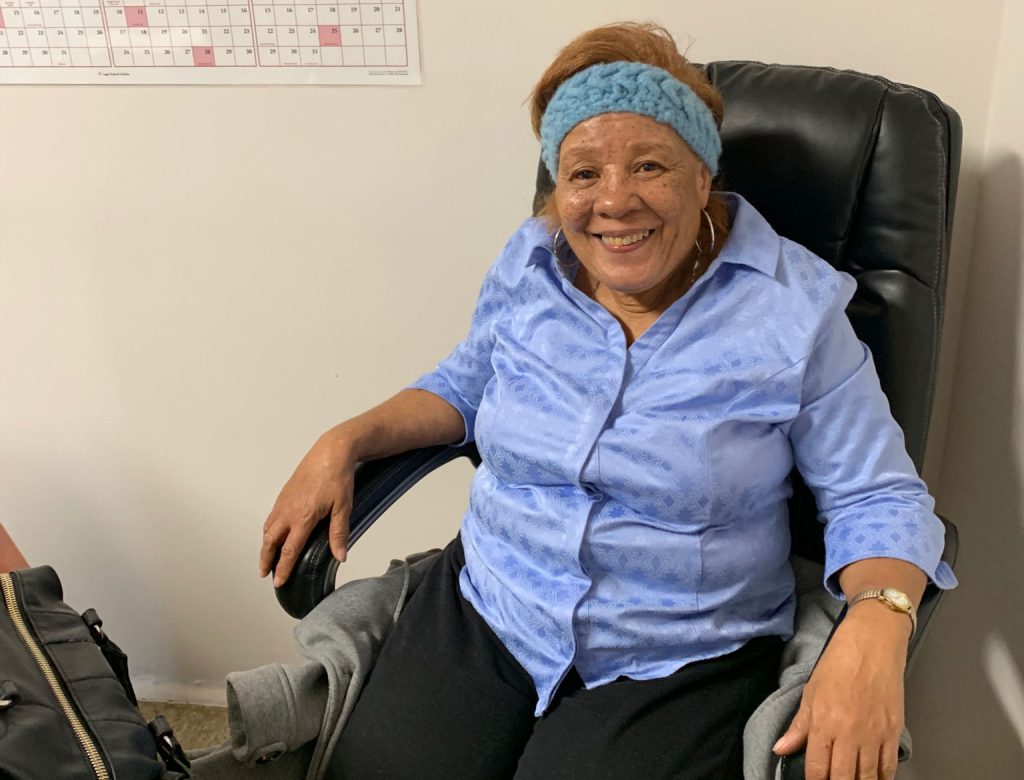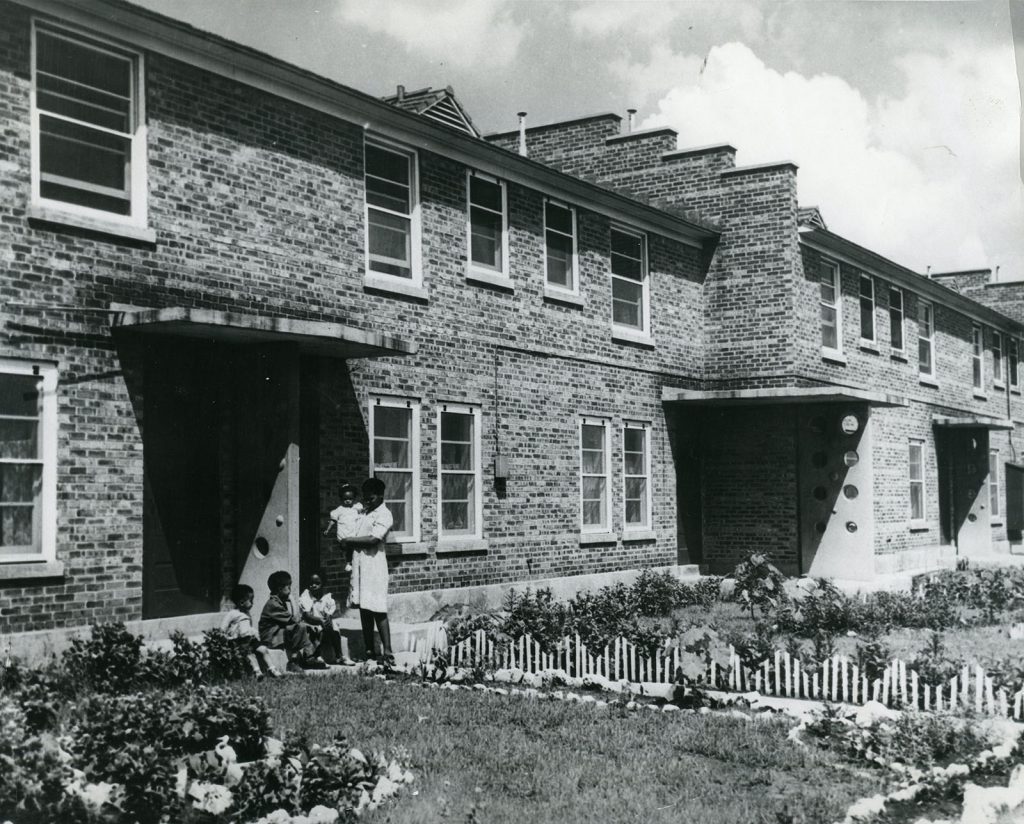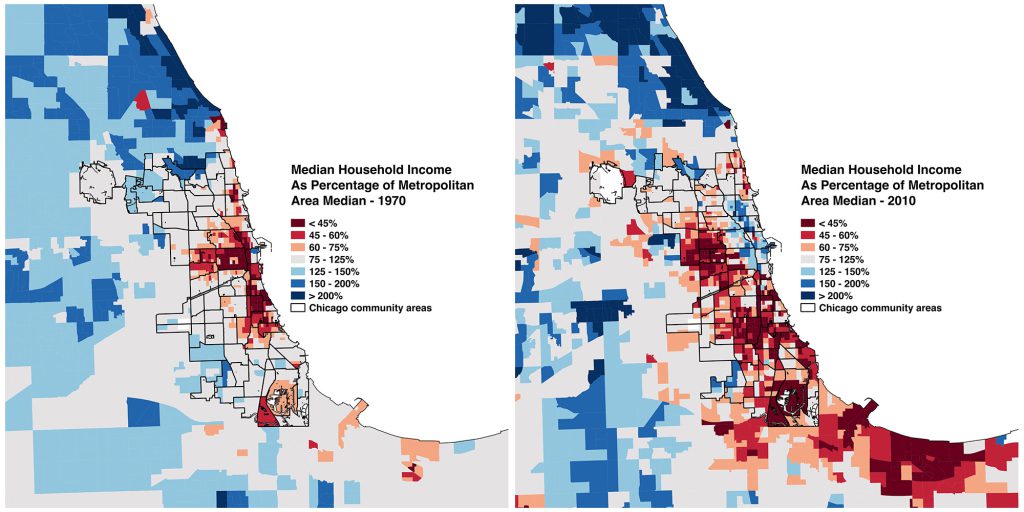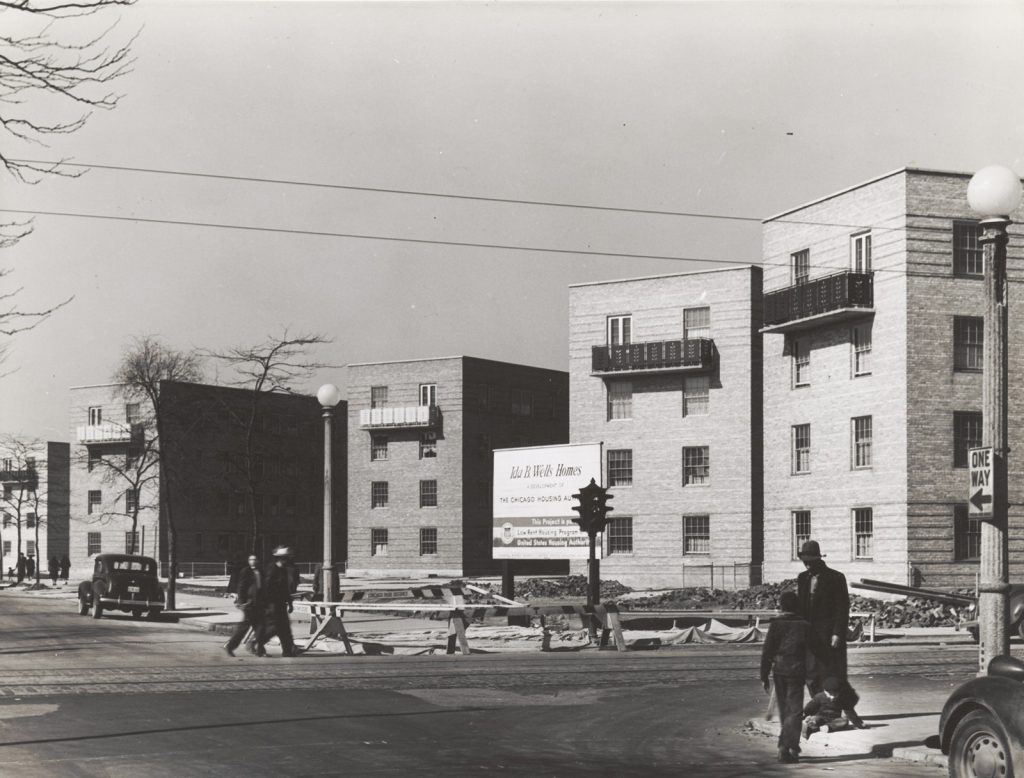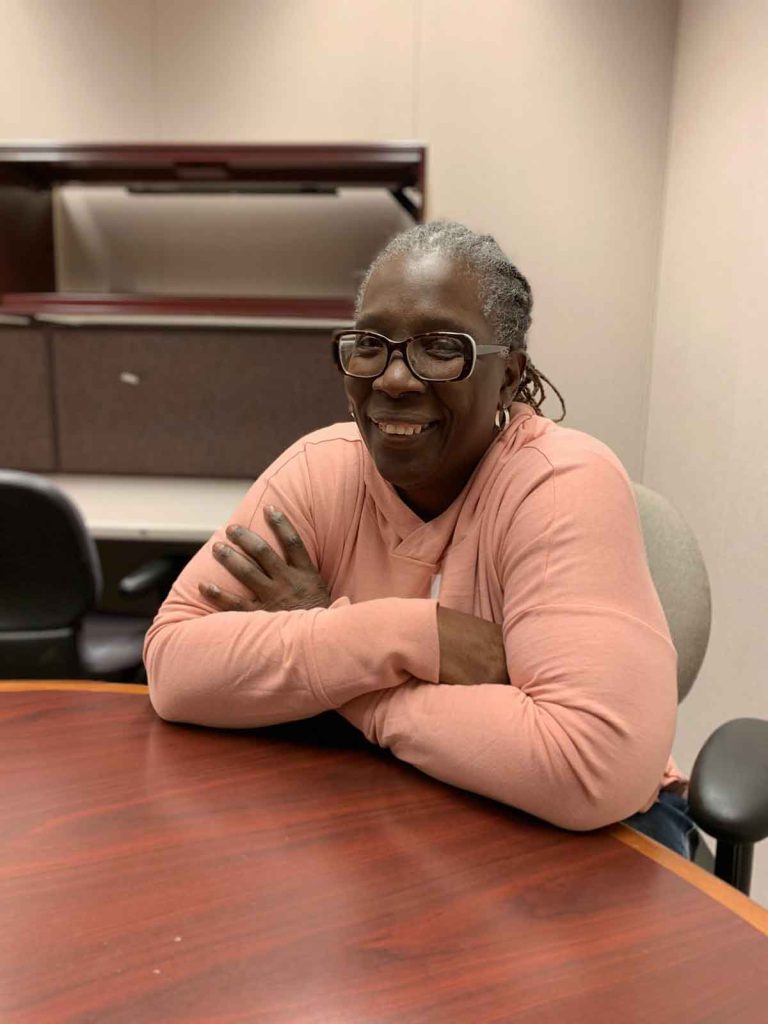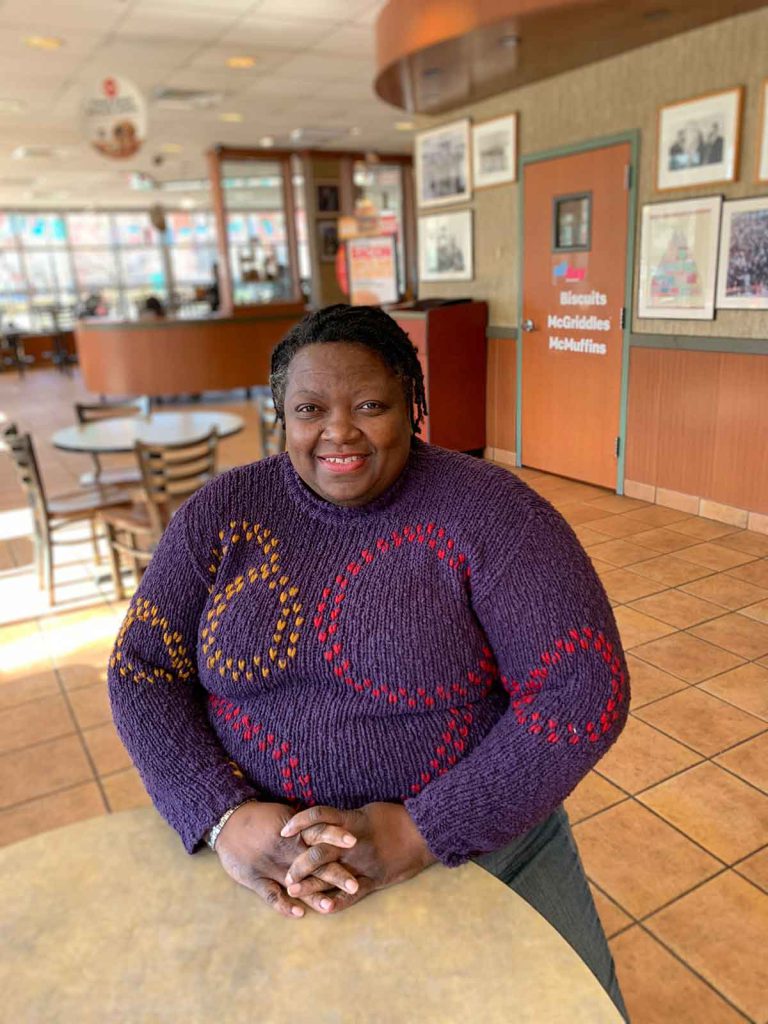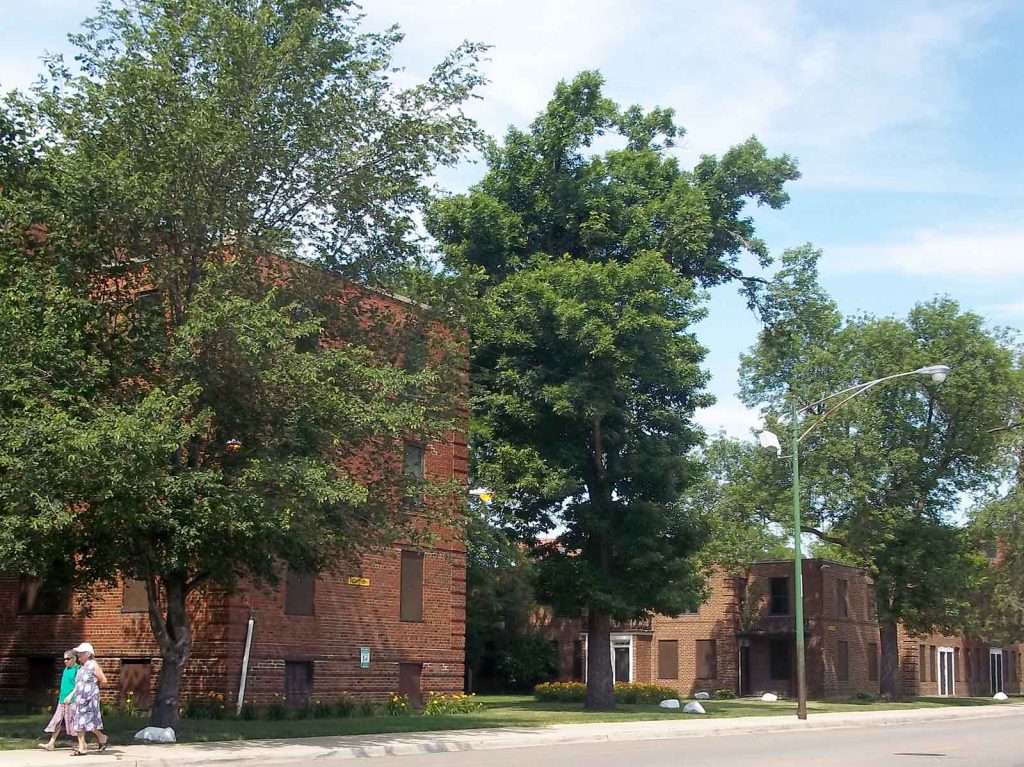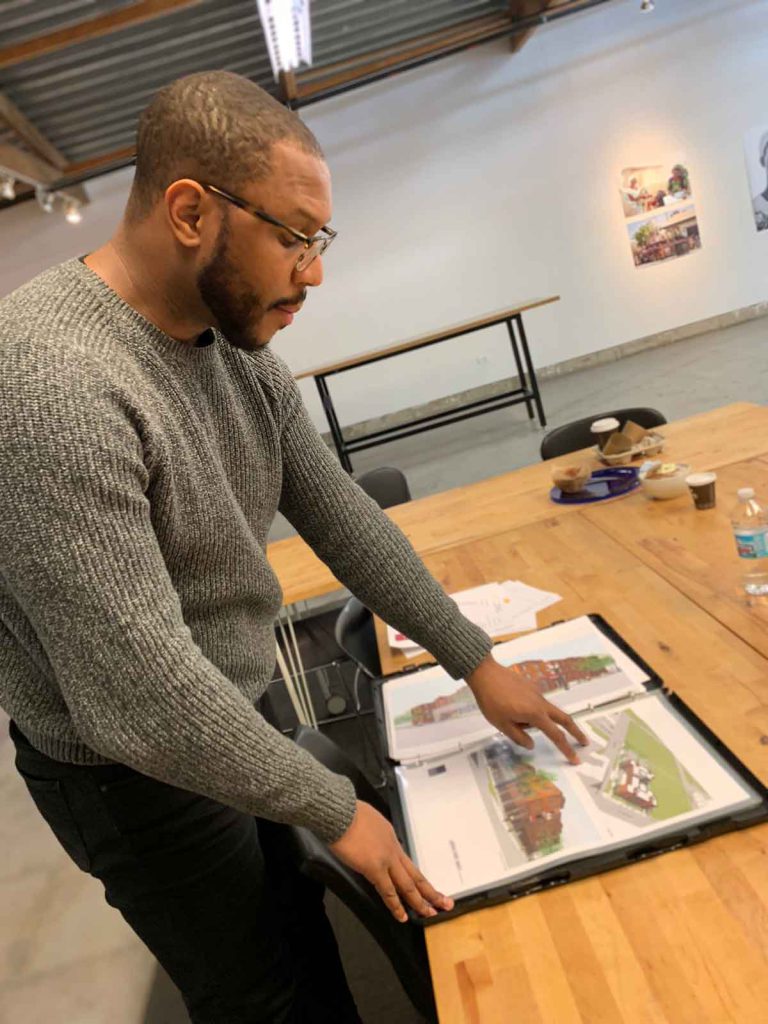Are Mixed-Income Neighborhoods the Best Answer for Public Housing?
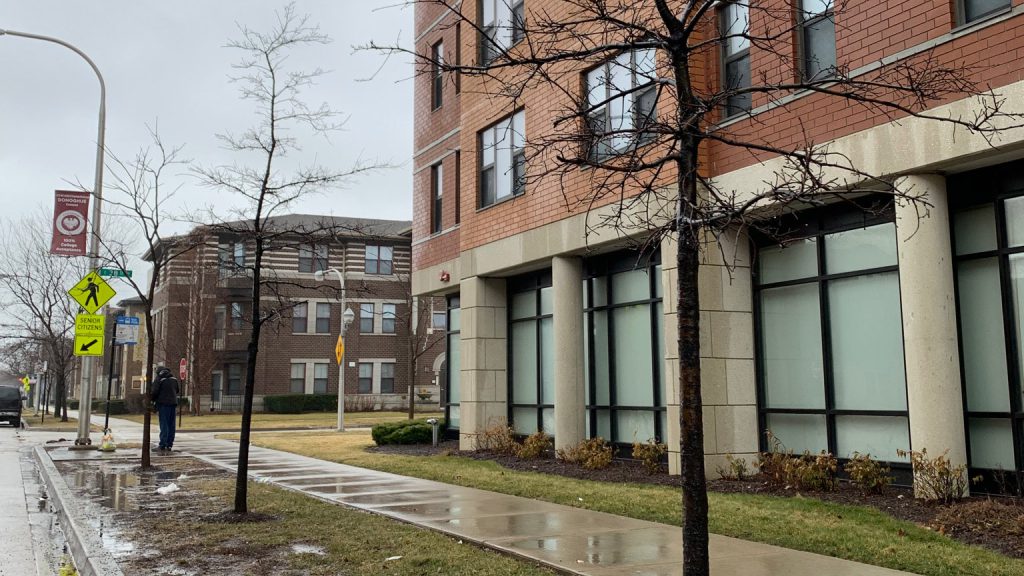
When Juanita Stevenson moved into Chicago’s Julia C. Lathrop Homes in 1983, she thought it was practically paradise. Children played in the grassy courtyards without fear. Neighbors would do anything for one another, whether giving a cup of sugar or watching kids while mothers were away.
But bit by bit, the specter of violence that loomed over Chicago’s other public housing projects stole over Lathrop as well. By the mid-1990s, gangs that controlled drug distribution holed up in the complex, touching off turf wars that caught project residents in the crossfire. Residents also felt that Chicago’s public housing authority (CHA) was breaking its pledge to keep the buildings in livable shape.
Stevenson, a freckle-cheeked grandmother who now serves as president of Lathrop’s advisory council, spends most days in her cozy office on the first floor of an original Lathrop row house. She recalls the decay she witnessed firsthand during the years of Bill Clinton’s presidency. “Vagrants came and took the copper out of the building,” she says. “The bricks started protruding and pushing out. It was designed to fail. It was neglect.”
As conditions at various housing sites soured, local and federal officials swooped in to assess Chicago’s overall public housing situation—and to attempt a large-scale reboot. On February 6, 2000, the CHA’s so-called Plan for Transformation officially began, among the first of its kind in a major U.S. city.
The “Plan,” as Chicagoans dubbed it, called for many public housing sites to be destroyed or renovated and turned into mixed-income developments. Its scale was unprecedented. With more than US$1 billion from the federal Department of Housing and Urban Development (HUD), the CHA planned to replace or refurbish 25,000 public housing units in run-down, violence-prone areas. This aim was akin to vacating and relocating an entire midsized city.
As other U.S. cities, like New York and St. Louis, carry out their own mixed-income experiments, Chicago’s Plan offers a number of powerful lessons. In nearly two decades, it has provided new opportunities and stability to many Chicagoans. But it’s also spawned challenges that no one fully foresaw.
“There was a lot of optimism, without thinking about, ‘What is a viable community?’” says anthropologist Catherine Fennell at Columbia University. Fennell has spent years documenting the stories of residents in these new mixed-income units, and she shares these stories in her book Last Project Standing.
Fennell’s encounters revealed residents’ frustration at being displaced, the unraveling of generations-old social networks, and—for both public housing residents and market-rate renters—the challenge of navigating new social expectations in a blended setting. While the Plan has improved certain aspects of residents’ lives, the hardships they face during ongoing transitions to mixed-income housing can also guide future city efforts to create and preserve healthy communities.
By the 1980s, Chicago projects came to dominate the city’s visual lexicon: stark concrete or brick public housing towers arrayed in clusters, presiding over vast stretches of grass or bare blacktop. But as distinctive as they were, the projects were also emblems of a broader national movement.
The 20th-century public housing landscape emerged in the 1930s and ’40s with a New Deal–inspired vision of replacing slums with subsidized, safe housing for the country’s poorest residents. In 1949, as the country basked in the postwar economic boom, the U.S. Congress passed a law to finance construction of more than 800,000 new public housing units across the nation.
CHA officials aimed to build 40,000 of those units. Modernist planners designed buildings that were the envy of some private-market renters. Many of the earlier public housing developments in Chicago were row houses or low-rise walk-ups. High-rise buildings followed, featuring open breezeways so children on upper floors could play in the fresh air.
But, as in many public housing developments around the country, racial prejudice thrummed from the start. By mid-century, riots were breaking out, fueled by white public housing residents who did not want black neighbors in their complexes. In Chicago, plans to build public housing units in mostly white neighborhoods were shelved because local elected officials feared their constituents’ wrath. The resulting racial segregation of Chicago’s projects became so pronounced that in the late 1970s, the Supreme Court affirmed that the CHA and HUD had taken part in discriminatory action.
That verdict meant that when the CHA set out to transform troubled housing sites in the early 2000s, it did so with an eye toward desegregation. Mixed-income housing—the solution floated by a national civic design movement called New Urbanism—seemed like an ideal strategy, allowing for both racial and economic integration.
In mixed-income communities, developers design a variety of homes for residents at different socioeconomic levels. Some houses, condos, or apartments are set aside for people who fall below a certain income threshold, and these are not available on the regular housing market. But alongside them are homes sold at market rate, with premium features and finishes—stone countertops, panoramic views—that entice upper- and middle-class buyers. The idea is to promote civic unity, upending the old habit of relegating low-income people of color to isolated and dangerous territories.
With the Plan, Chicago became a pioneer, adopting mixed-income housing on a massive scale. Private developers came in to create designs and entice market-rate buyers to move in, and the mix of tenants was carefully balanced in ways that planners thought would promote neighborhood stability.
For Fennell, who had a long-standing interest in city planning, the Plan raised a number of questions. In the early 2000s, she was beginning her graduate work at the University of Chicago. She realized that one of the biggest urban-planning experiments in U.S. history was happening in front of her eyes.
“Chicago was such a singular case,” says Fennell. “The scale of the reforms was much more sweeping here than elsewhere.” In a project that took the better part of a decade, she decided to study how the Plan was affecting everyone involved, from public housing residents to market-rate buyers to neighborhood observers.
To get an immediate sense of what the Plan for Transformation has achieved in Chicago, you have to go on site. Shirley Newsome is a community planner who has advised the CHA and a longtime resident of Chicago’s South Side. Her neighborhood has long boasted an assortment of historic homes. But nowadays, it also showcases block after block of sparkling new housing, making clear that the CHA proceeded as thoroughly as a dentist doing a multiple extraction.
The monolithic Ida B. Wells public housing towers, with bars penning in window openings, have mostly been torn down. They’ve been replaced by the constellation of condos and mid-rises that make up the Oakwood Shores mixed-income development. “The housing took some of the features of the older housing, but it still looks contemporary,” Newsome says.
With architectural details like striped facades and shaded triangular balconies, the three-story apartment buildings showcase the CHA’s aesthetic evolution since the Ida B. Wells towers were built. Well-manicured boxwood shrubs march along the sides of the new buildings.
But the Plan’s successes go deeper than surface level. Applied sociologist Susan Popkin and her colleagues surveyed almost 200 CHA families relocated as part of the Plan, following many of them for more than a decade starting in 2001. Quality of life, she and her colleagues found, improved for most people. Popkin, a fellow at the Urban Institute, described benefits such as “safer communities with less violent crime and fewer signs of physical disorder.”
More than 75 percent of residents thought their new housing was in better shape than the units they’d left. The number of people saying violence and shooting were major problems dropped from over one-half to about one-quarter as relocation progressed.
Oakwood Shores, the development near Newsome’s home, boasts an urgent care center, a community center, and a Mariano’s grocery store, all within walking distance for residents. Most of these amenities were harder to access in projects that the Plan knocked down. As another potential benefit, Newsome notes that she and other community planners are encouraging new businesses in the area to hire from the community.
Newsome has seen people thrive as they emerge from the shadow of ongoing violence. “They come out and walk the street,” she says. “There’s the interaction with the neighbors. It has truly become a neighborhood.”
Her perspective captures the triumphs of the Plan. But ongoing challenges remain, many of which complicate the CHA narrative of unbridled progress. Popkin and her colleagues reported that many transplanted youth still struggle with academics and engage in crime.
Quality of life has improved for most people; communities are safer.
In addition, many residents displaced from the now-demolished towers had to accept CHA vouchers to find housing on the private market, leaving them adrift and cut off from former communities. These voucher-holders often have trouble getting the services they need.
The issues the Plan created caught Fennell’s attention when she began interviewing Chicagoans in the 2000s. She spent hundreds of hours with residents to understand how the Plan’s changes were affecting their physical and social surroundings. Some people were excited about starting over somewhere new. But others told her that what was being billed as an urban planning success came with its share of loss, a concern still echoed by some residents today.
Crystal Palmer remembers watching, transfixed, as the wrecking ball slammed into Henry Horner Homes in the 1990s—the complex where she’d lived with her family for more than a decade. “All your memories,” she says, “everything gone, erased.”
Palmer, who now works for the CHA, had long known some aspects of life at Horner needed to change. In the 1980s and ’90s, Horner had become notorious for its violence and gang activity. But Palmer thinks press reports written like war-zone dispatches didn’t tell the whole story. A vibrant community also thrived within those walls, and she was shattered to learn that her old home was targeted for demolition.
“People on the outside think it was such a horrible place. That’s not true,” Palmer says. “Yes, there was violence but also family and camaraderie.”
After Horner fell, Palmer moved into Westhaven, a mixed-income development created as part of the Plan. She was initially thrilled that there were laundry machines and stores close by, though some stores were more expensive than she would have liked.
But in other ways, daily life came with a steep cultural learning curve. For years, the CHA had delivered free heat to most public housing units. That near-tropical heat had been a major constant in residents’ lives, and over the years, their bodies had gotten used to it. “You were raised there, you had good heat,” Palmer says. But in mixed-income communities like Westhaven, she continues, residents pay for heat separately, and some report a constant chill. “A lot of them have windows from floor to ceiling. It’s a major adjustment.”
As Fennell interviewed scores of people from Henry Horner Homes, she learned that the loss of “project heat” had come to stand for the ways people’s new surroundings felt alien and uncomfortable. Residents told her that to re-create the extreme heat they’d grown used to, they were running up hundreds to thousands of dollars in monthly heating bills.
Displaced public housing residents also had to rebuild kinship networks among neighbors that had sustained their needs over generations. At the original CHA sites, “there was a sense of community,” says Jackie Paige, who lived in the Robert Taylor Homes for many years.
If a new mother was struggling, Paige remembers, “people in the neighborhood would turn around and help that young woman. The elders would say, ‘You need to do so and so for that baby.’” When complexes such as Robert Taylor and Horner were knocked down as part of the Plan, these sustaining communities took a hit as people scattered to new homes—though Paige says some people have managed to stay in touch through social networking sites such as Facebook.
Creating new communities is especially hard for the thousands of people who, like Paige, are not in new developments but rather hold a housing voucher. Paige is working to create a stronger sense of community among people in the same position, but forging these bonds is an uphill battle due to what she sees as the CHA’s efforts to discourage voucher-holders from organizing effectively.
Within the new mixed-income communities, Fennell saw tensions flaring across class and background lines. While at Westhaven, she interviewed John (a pseudonym), an urban professional who told her, “People are playing the music or talking loud, staying up to 3 or 4 o’clock in the morning, without any real concern for keeping things quiet for someone living next door.”
Market-rate residents struggled to understand their new neighbors’ preference for large outdoor gatherings. In addition, they feared that criminal or dangerous activity, long associated with public housing, would appear in their new neighborhoods.
By the same token, public housing tenants grew annoyed with the habits of the market-rate homeowners, some of whom left their dogs’ droppings behind when they walked their pets. New market-rate neighbors not only failed to greet the public housing tenants on the street or in the hallways, they would sometimes report them to the police or management if their households seemed too large, suspicious, or unruly. Those reports could lead to eviction.
New mixed-income residents found themselves up against unfamiliar ideas about what community life was supposed to look like. Fennell describes some of the tensions: “Where should kids play—the sidewalk, the park? What kind of supermarket should we have? Who should be visible in public space?”
Palmer, who worked as a resident advocate, held regular meetings to prepare new residents from public housing for their transition to mixed-income communities. “We had to talk to people about having a complete mindset change,” she says. Among the activities that were now verboten: having loud parties, especially at night, and hanging out in certain open areas. CHA residents who pushed the limits too often risked being sanctioned or losing their units in mixed-income communities.
Juanita Stevenson, who has witnessed many phases of Lathrop Homes’ history, will soon be moving to a nearby mixed-income complex. Though she is looking forward to her sparkling new home, she has no illusions about the toll the move will take on her existing community.
As Stevenson chats with four Lathrop friends in her toasty office, they laugh together about times they’ve shared and how far back they go. “Holidays, Thanksgiving dinner, Halloween, bingo,” says longtime resident Annette Griffin, rattling off Lathrop’s community events. Stevenson later reflects on friends who have already gone: “A lot of them left here, and they’re just dying to get back. You think you can go out there and have something better, but you had it right here.”
Some residents and planners are working to preserve reminders of a public housing culture that is slipping away. When the CHA’s historic Jane Addams Homes and other nearby projects were put on the chopping block, residents fought to turn one of the buildings into a museum so people could learn about how families once lived and socialized there.
The idea soon blossomed into a larger one: creating the first National Public Housing Museum (NPHM) to guide visitors through public housing’s history and its ongoing evolution. The museum’s single scrappy gallery, housed in a temporary building on Kingsbury Street, looks like a cross between an exhibit space and a design studio. It features artifacts like a schoolhouse desk and a suitcase that residents used to sell candy within the complex.
Public housing residents have been intimately involved in the museum’s evolution, former associate director Robert Smith III says: “They’re advisers and critics, loaning objects, recording stories. They’re the oral historians.”
But like the Plan for Transformation itself (now branded as Plan Forward), the NPHM is very much a work in progress. Funders are still short about US$12 million to complete construction, so the museum’s official opening date has been pushed back multiple times. These false starts seem to justify questions public housing residents have had for years: Does this changing community deserve a place in the national conversation? Is anyone on the outside paying attention?
Meanwhile, friction continues between people of different income levels at the new developments. The culture clashes have spawned another issue: People who can afford to buy property in these neighborhoods don’t necessarily stay. “The condo owners have moved out, and they’re renting their places,” Palmer says. These departures erode the prospect of a tight-knit core of residents who are committed for the long haul.
Palmer suspects that part of the problem is that some buyers were misled by the Plan’s rosy vision. Unlike the public housing residents who Palmer prepares for the move into mixed-income developments, the market-rate residents don’t always anticipate the coming culture shock. “If I was to say something to a developer, when you build these new communities, tell people the truth about the community,” Palmer says, including the broad sweep of social, racial, and economic diversity. “If you make all these beautiful brochures, people walking on the lakefront, and you just exclude the people that have lived there throughout the hard times, that’s not fair.”
Fennell agrees that many newcomers did not know exactly what they were in for when moving to Westhaven. The idea that a socioeconomically diverse group of people would somehow forge a strong community by living next door to one another has not been borne out in her research. Palmer suggests that future mixed-income housing planners lay more relationship-building groundwork, including bringing residents together more often in social settings before they move into new developments.
“Who should be visible in public space?” asks anthropologist Catherine Fennell.
Fennell hopes housing planners will probe deeply into each community’s strengths and how its members lead their daily lives before moving forward with redevelopment. After community developers realized how much public housing residents valued spending time with neighbors out in front of their buildings, for example, they added the kinds of outdoor spaces people wanted to some of the newer developments. Fennell thinks it’s best for such inquiry to happen early in the planning process to avoid expensive revisions later on, which can be stressful for everyone involved.
As redevelopment plans proceed around the country, it seems likely this kind of careful inquiry will only take place if city dwellers of all income levels insist on it. Every public housing venture necessarily “deals with larger issues of what citizens owe one another,” Fennell says.
“What do you owe the person who lives down the street? At this political moment, what do we owe each other?” Fennell asks. The ultimate fate of mixed-income experiments will rest on our collective ability to piece together an answer.































